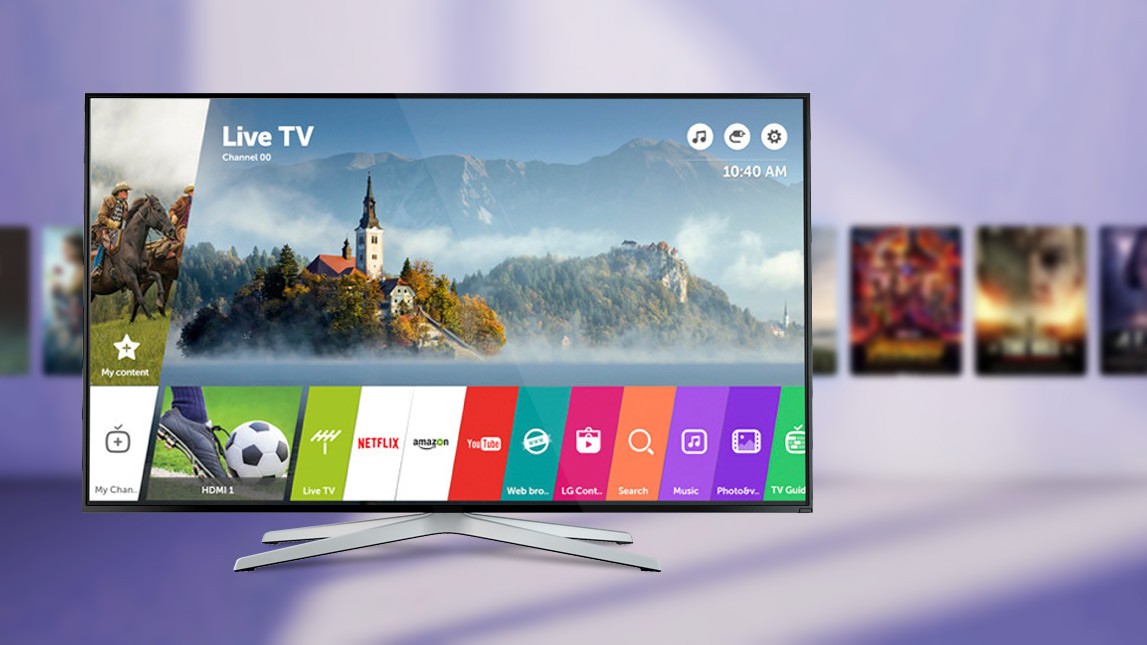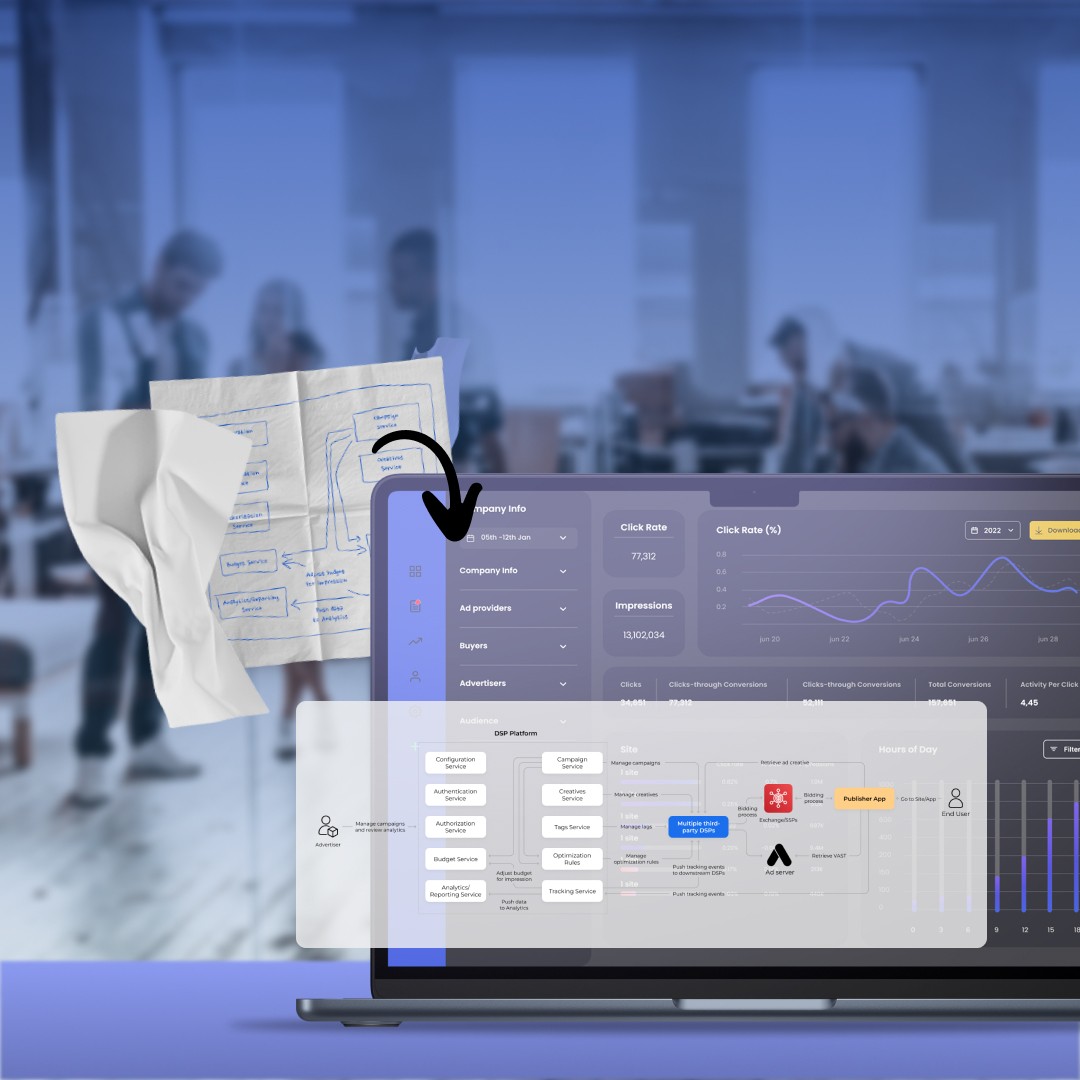The OTT streaming services’ rocketing induced video content providers to adjust to the new way of delivering their products to customers by building their TV apps on multiple operating systems, increasing audience outreach, broadening service options, and enjoying unique features each Smart TV platform has to offer. Uncover the specifics of webOS TV app development and start a new chapter for your business.
LG TV Global Positions
LG company is considered one of the key Smart TV vendors for over 5 years now, being a runner-up in size of its 18.5% market share. Together with Samsung, they hold almost half of the global OTT TV market bringing the highest quality video content to users worldwide. LG powers over 120 million devices across 150 countries and enriches its marketplace with TV apps from up to 300 partners.
WebOS Essense Explained
Initially brought to life by Palm and designed to serve as a mobile Linux-based operating platform, webOS was bought by LG in 2013 to become one of the most used smart TV operating systems on the market. WebOS is the backbone of LG TV that provides an unmatched watching experience for people from any part of the world.

LG smart TV
Formats
The OS supports the main streaming protocol format HLS. As for MPEG-DASH, webOS doesn’t officially support it though in practice there is limited support for VOD streams. Speaking of DRMs, the platform is compatible with PlayReady, Widevine Classic, and Widevine Modular. While developing webOS TV applications, all types of images can be used, including JPEG, Graphics Interchange Format, Portable Network Graphics, Bitmap, and WebP.
Resolutions
To provide top-notch quality TV apps, the OS sets a 1280 x 720 (2K) threshold for Full HD Model and 1920 x 1080 (2K) for Ultra HD Model as concerns graphics resolution, and for video playback, webOS requires optimizing display resolution up to 1920 x 1080 (2K) for Full HD Model and 3840 x 2160 (4K) for Ultra HD Model respectively.
Devices
Being a front-runner in advancing TV technology, LG regularly releases new Smart TV models while overhauling hardware and software to improve performance. Thus, 2018 Smart TV models were running on webOS 4 with 1GB RAM. WebOS 5 improved to 1.1GB RAM and the latest version, webOS 6, has 1.3GB. Although, these upgrades may not be as impressive as Samsung Tizen’s evolution from 1 GB RAM in Tizen OS 4 to 4 GB RAM in Tizen OS 5 and 6.
WebOS is also a great example of an operating system enjoying unlimited extendability. The range of devices it powers is not limited to smart TVs only but also covers digital signage, smart domestic appliances, wearables, robots, and automotive.
Additional Ecosystem Features
Developing apps for webOS TV, you can create extra value for your product by leveraging LG AI ThinQ. The technology is capable of unlocking advanced AI-powered smart TV functions such as automatic audio and picture quality adjustment, voice screen navigation, and sports events notifications. Besides, LG TV can serve as a control panel for other smart home appliances and share streaming content to mobile devices.
How we can help
Looking for a seasoned LG TV app development provider?
Oxagile strong tech expertise and domain experience are here to help you.
LG WebOS TV Key Characteristics Overview
To get a better understanding of how webOS works from the inside, take a look at its main tech features and app development peculiarities.
Languages, APIs, SDK
Within the webOS framework, LG TV developers can build applications using JavaScript, HTML5, and CSS3, which are the most popular options to code in. As for APIs, the operating system supports TV WebAPI, Luna Service API, and webOSTV.js to provide key services and functionality to the future app. The platform suggests using custom LG webOS TV SDK for smooth high-quality app development. To provide an easy and quick application debugging, webOS has introduced the Developer Mode App which makes the whole process a lot more convenient.
Design and UI/UX
WebOS TV apps are renowned for their simple and clear design enhanced by consistent, immersive, and customizable UI. The concept centers around the idea of spaciousness, absence of clutter, and an effortless screen navigation experience. To provide better UX, LG has developed a Magic Remote Control unit that enables users to have a mouse-like navigation experience, manage voice commands, and auto-connect other smart devices at home to it.
TV App Testing
After the app development process is finished, there comes testing. Since smart TV can be viewed across multiple devices, fragmentation is what makes this stage extremely challenging. One of the benefits of building apps on webOS is the access to Developer Mode App that opens up an easier way of app installation, debugging, and testing by connecting TV and PC to provide an exceptional experience for LG smart TV app developers.
TV App Submission
Devoted to the concept of simplicity, webOS presents a clear-cut app submission process consisting of 3 steps. First, register your app in IPK format at LG Seller Lounge. After that, the evaluation team will take their time to make sure the application meets the quality requirements and then the app will appear on LG Content Store. As clear as it can be.
Wrapping Up
WebOS TV app development is a great option both to start off monetizing your video content sharing idea and to scale up an existing app by bringing it to other operating systems. Having won the hearts of millions of viewers, LG TV opens up access to new vast audiences and provides a highly functional and intuitive ecosystem for building top-notch apps that take video streaming businesses to the next level.
























